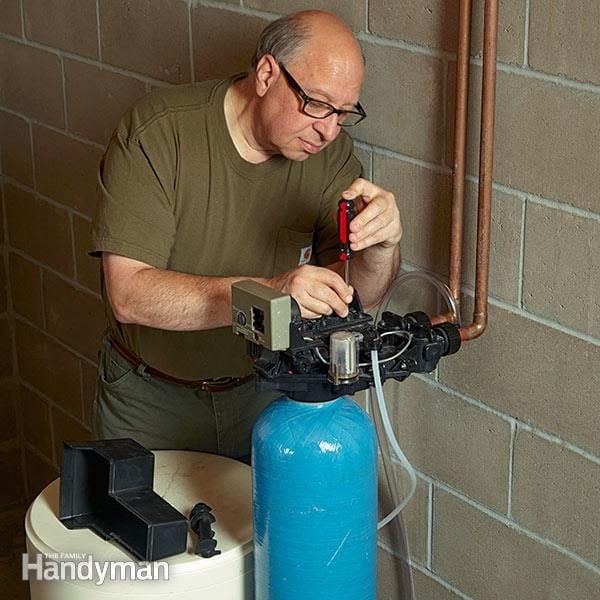Post a picture of yours. The image you did show does not have a vent. The concern is that the trap gets emptied by siphon action, and smells come out the top.
A softener with a 10x54 inch tank backwashes at 2.4 gpm. Is that going to cause your 2-inch standpipe to siphon out? Right after backwash, the drain starts putting out a much lower amount of water-- on the order of 1 gpm. I have a hard time thinking that that flow rate would allow a 2-inch standpipe to siphon. As far as code goes, it needs a vent. I am not a pro.
The backup into the basement thing is not a common worry. A backup could happen from the floor drain or laundry tub or laundry standpipe too.
It is normal in non-earthquake areas to not have restraining straps on a softener tank. In earthquake areas, they even put restraining straps on water heaters. I think I see your point that rigid pipes would provide some tip-resistance.
A softener with a 10x54 inch tank backwashes at 2.4 gpm. Is that going to cause your 2-inch standpipe to siphon out? Right after backwash, the drain starts putting out a much lower amount of water-- on the order of 1 gpm. I have a hard time thinking that that flow rate would allow a 2-inch standpipe to siphon. As far as code goes, it needs a vent. I am not a pro.
The backup into the basement thing is not a common worry. A backup could happen from the floor drain or laundry tub or laundry standpipe too.
His tubing hangers seem good to me, but two more hangers might make it look better. Are you concerned about the 18 or 24 inch flex lines carrying the water to and from the softener?roswell65's softener plumbing into the main line seems iffy to me - the connecting lines just hanging in the air and the softener prone to being knocked over.
It is normal in non-earthquake areas to not have restraining straps on a softener tank. In earthquake areas, they even put restraining straps on water heaters. I think I see your point that rigid pipes would provide some tip-resistance.
Last edited:

